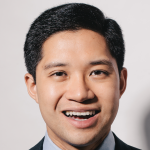What Should Lawyers Look For In Litigation Financing?
Several factors must be considered when seeking litigation funding for your clients.
 We’ve previously discussed what litigation finance firms are looking for when it comes for cases to fund. Now let’s look at the other side of the equation: what should lawyers look for when trying to obtain litigation funding for their clients? As litigation funding continues to grow, knowing how to choose between funders will be more important than ever.
We’ve previously discussed what litigation finance firms are looking for when it comes for cases to fund. Now let’s look at the other side of the equation: what should lawyers look for when trying to obtain litigation funding for their clients? As litigation funding continues to grow, knowing how to choose between funders will be more important than ever.
Last Thursday, I spent the day at the Litigation Funding Forum, where I attended a panel called “Comparison Shopping: What Counsel Should Look for in Identifying the Right Litigation Financing Firm for Their Clients.” It featured the following panelists:
- Laina Miller Hammond (moderator), investment manager at Validity Finance;
- Teddy Baldwin, partner at Steptoe & Johnson;
- Boaz Weinstein, principal and co-founder at Lake Whillans;
- David Spiegel, managing director at GLS Capital; and
- Roni Elias, asset manager at TownCenter Partners.
Laina Miller Hammond opened with an observation: some people think funding is all about terms, but in her experience, claimants and counsel care a lot about having good relationships. She compared it to dating in that respect; the “fit” needs to be right.
Not all funders handle all types of cases, so fit also involves whether a particular funder happens to finance a particular type of case. For example, as David Spiegel noted, one common distinction is whether the funder handles intellectual property cases; his firm doesn’t do IP, although many others do. his firm does back IP cases (although it’s not an area of personal focus for him). [UPDATE: The preceding sentence was corrected to reflect that GLS Capital does fund IP cases, even though David Spiegel doesn’t specialize in IP personally.]
Funders also focus on different segments of the market and deals of different sizes. Roni Elias of TownCenter Partners said that his firm will invest anywhere from $5,000 to $1 million in a case, and it handles a fair number of personal injury cases (and even has an in-house doctor to review cases with medical issues). On the other end of the spectrum, Boaz Weinstein of Lake Whillans focuses on the commercial sector (excluding IP) and on larger cases, with a typical single-case investment ranging from $2 million to $10 million (and from $2 million to $40 million for a portfolio investment).
That’s what the funders say. What’s the perspective of counsel? Teddy Baldwin of Steptoe, who has utilized litigation funding in the past and continues to use it, identified two key factors: speed and flexibility in deal structure.
In terms of speed, Baldwin explained that by the time a client has decided to pursue a case, they want to get underway as soon as possible (or, if the case is already underway, they need funding to continue the case). As for flexibility, there are many ways to structure a deal. For example, the funder’s desired return could be expressed as a multiple of the investment, a percentage, or a specific dollar amount.
On the issue of speed, how long does a funder take to decide whether to back a case? Boaz Weinstein of Lake Whillans said their typical diligence period is roughly 30 days, followed by another two to three weeks to draw up transaction documents. Factors that affect timing include the complexity of the case and also how quickly the claimholder and counsel respond to specific queries from Lake Whillans about the case.
“We’re a fairly small team, all principals are involved in the underwriting process, and we give applicants real-time feedback about our concerns,” Weinstein said. As for the form of that feedback, “We aren’t looking for written work product — we’d rather talk through the issues, and we might have multiple calls with the claimholder and their counsel over the course of the 30 days or so.” In other words, the process is not a black box where Lake Whillans hears about a case, disappears, and then reappears 30 days later with a funding decision; instead, it’s transparent and ongoing.
On flexibility, the funders on the panel stressed their willingness to work with claimholders and counsel to develop a mutually beneficial deal structure. For example, sometimes the funder might give the claimholder money that can be used for operating expenses (as opposed to just litigation expenses), or sometimes the return to the funder might be higher if the case goes on for longer than expected.
As we’ve discussed in the past, ideally the funder and the claimant are on the same page about the expected course of the litigation and what would constitute an acceptable resolution. But as Teddy Baldwin of Steptoe pointed out, deals can be structured creatively to reflect divergent expectations; there’s a lot of play in the joints. When a deal does fall apart, he said, it’s often just because the funding on offer is simply too expensive.
And what about counsel to the claimholder — what do funders expect from them in terms of their exposure to the risk in a case?
At Validity, according to Laina Miller Hammond, “We do want outside counsel to have some skin in the game.” When the lawyers on a case affirmatively want to share risk, “That speaks volumes to us about the viability of the case.”
What risks are lawyers and law firms willing to take? If they’re confident in the merits of their case, quite a bit — but what can be tough, Baldwin said, is when there’s a potential problem with collecting any eventual judgment. Law firms, after all, are focused intensely on collections, so they’re particularly averse to collection risk. (This sometimes comes up in international arbitrations where foreign governments are the defendants.)
Litigation finance firms are in the space to make money, of course, so the allocation of risk and reward matters greatly. Technology has also affected the field, with litigation funders using data analytics to make predictions about case durations and outcomes.
But returning to what Laina Miller Hammond said to open the panel, there’s still a strong human component that can’t be overlooked.
“If you’re comfortable working with us, great; if you want to work with someone else, great,” said Roni Elias of TownCenter Partners. “At the end of the day, it’s all about relationships.”
P.S. If you share my interest in litigation finance, then you might be interested in this great new resource: a comprehensive digital library of documents relating to the litigation-funding industry, just launched by the Center on Civil Justice at NYU Law School.
 David Lat is editor at large and founding editor of Above the Law, as well as the author of Supreme Ambitions: A Novel. He previously worked as a federal prosecutor in Newark, New Jersey; a litigation associate at Wachtell, Lipton, Rosen & Katz; and a law clerk to Judge Diarmuid F. O’Scannlain of the U.S. Court of Appeals for the Ninth Circuit. You can connect with David on Twitter (@DavidLat), LinkedIn, and Facebook, and you can reach him by email at dlat@abovethelaw.com.
David Lat is editor at large and founding editor of Above the Law, as well as the author of Supreme Ambitions: A Novel. He previously worked as a federal prosecutor in Newark, New Jersey; a litigation associate at Wachtell, Lipton, Rosen & Katz; and a law clerk to Judge Diarmuid F. O’Scannlain of the U.S. Court of Appeals for the Ninth Circuit. You can connect with David on Twitter (@DavidLat), LinkedIn, and Facebook, and you can reach him by email at dlat@abovethelaw.com.







